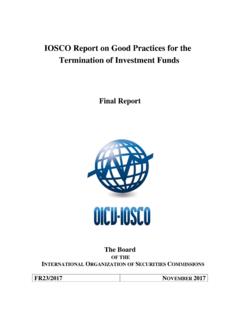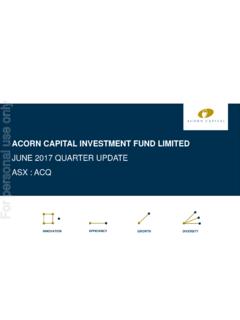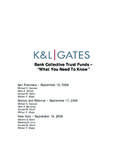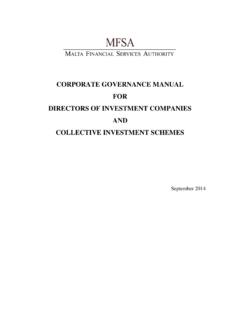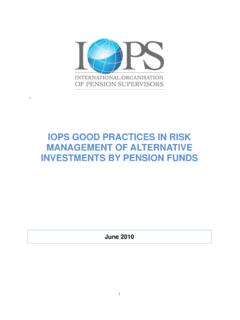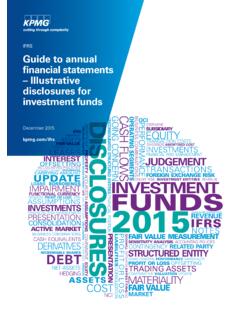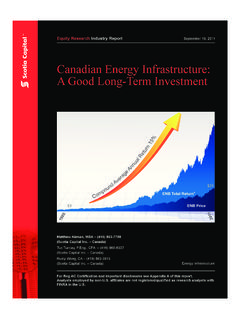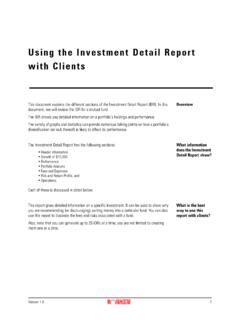Transcription of Raising Money For Real Estate Deals: Today’s Market Terms
1 The Practical real Estate Lawyer | 53 Lawrence J. Feller and Keith H. BerkAs debt financing remains challenging to secure, private financing remains an attractive real Estate investMents continue to be financed through a combination of mortgage debt and equity. Over the past few years, the equity requirements imposed by mort-gage lenders have risen, increasing the amount of capital real Estate entrepreneurs must raise from investors. In today s Market , a real Estate entre-preneur should expect the equity component of a deal to comprise 25 to 40 percent of the ap-praised value of the property, and likely higher for development deals and other projects considered more risky.
2 The good news is that private capital remains available for investment . That being said, investors are more risk averse than in days past and, as a result, are scrutinizing deals closely to make sure that the project makes sense, the spon-sor is capable of executing, and projected returns appropriately reflect the project s risks. One of the most common questions posed by sponsors desiring to raise Money for a real Estate project is, On what Terms should I structure the deal between myself and my investors? This is an interesting question, and not necessarily one that Lawrence J. Feller,a transactional partner with Hor-wood, Marcus & Berk, advises and provides strategic planning for entrepreneurs, closely held busi-nesses, and capital placement firms generally headquartered in the Chicago area.
3 Larry s clients are generally linked by their en-trepreneurial spirit, growth aspi-rations, and practical and value-oriented approach to business matters. A significant portion of Larry s practice is dedicated to transactional work and tax planning for individuals and companies engaged in real Estate activities. Matters include acquisitions and dispositions of various property types includ-ing shopping centers, office buildings, multifamily apartment buildings, hotels, and raw land for development, as well as counseling on tax incentive and savings programs available to real Estate entrepreneurs in Illinois.
4 Larry also advises indi-viduals and organizations otherwise involved in real activities such as property management, asset management, leasing, construction and brokerage. He can be reached at H. Berk,also a transactional partner with Horwood, Marcus & Berk, devotes his practice to serving middle-mar-ket businesses, often acting as part-time general counsel. Keith empha-sizes a business approach to the practice of law focusing on growth strategies, plans to attract and retain key management, designing orga-nizational structures that minimize risk and allow flexibility for growth and serving as an ongoing resource to assist clients in making legal decisions that maximize the opportunity for long-term success.
5 Keith is a well-known fa-cilitator of middle- Market deals, having counseled clients on mergers and acquisitions for more than 20 years. He has suc-cessfully implemented a wide range of tax-advantaged capi-tal structures, shareholder and family-ownership structures, and private-equity and venture-capital structures to enhance growth and to provide exit strategies. He can be reached at Money For real Estate Deals: Today s Market Terms54 | The Practical real Estate Lawyer July 2011is easy to answer, in part because the Terms for in-vestment are generally not publicly available.
6 More-over, several variables influence structure including the sponsor s reputation and track record and the risk/return profile of the underlying project. As a result, there is no one size fits all answer to this question. Despite the varying nature of projects and the sponsors who operate them, the economic proposi-tion to investors follows certain trends. This article begins by explaining the key economic Terms that appear in today s real Estate deals, including the ranges of fees and promotes. Next, this article de-scribes other non-economic Terms that commonly appear in today s real Estate deals.
7 Lastly, this ar-ticle explains how the traditional structure may be influenced when institutional investors or other sophisticated, big- Money investors participate in a real Estate project. The information in this article is premised on a few assumptions and beliefs: First, we have assumed that investors are pas-sive investors, fragmented from one another, and are not friends and family ; Second, we have assumed that the capital raise is not targeted to one or a few institutional in-vestors, as one or a few institutional investors will be able to demand Terms more favorable than smaller, fragmented investors could de-mand.
8 Third, the metrics and data cited in this article are intended to reflect what the authors believe are the most representative figures, but should not be construed as suggesting that deals can-not and do not fall outside the described ranges; Fourth, the authors recognize that certain real Estate asset classes may be viewed as more risky than others. Most of the data cited in this ar-ticle is based on the authors experience in the multi-family, commercial, and industrial property sectors. It is possible that the trends in other sectors may differ. It is also likely that the trends within multifamily, commercial and industrial differ from one another, although the authors have not attempted to discern such dif-ferences; and Finally, we have assumed that the vehicle for investment is a pass-through entity for tax pur-poses.
9 For purposes of this article, we generally refer to the agreement between the sponsor and the investors as the partnership agreement, regardless of the underlying investment vehicle entity type. Key econoMic Terms in today s deals This article sets forth the general Terms upon which sponsors are Raising capital for real es-tate projects in today s economic structure Most real Estate deals share certain economic attributes. In most cases, the first profits are paid to investors until investors are repaid their original investment , plus a preferred return. (In some cases, particularly in the case of income producing prop-erties yielding current cash flow, a sponsor might structure a deal that allows it to participate in its promote once the investors have received a pre-ferred return but before the investors have received the return of their original investment .)
10 This is pre-mised on the notion that, in these cases, the inves-tors are not likely to receive their original invest-ment back until the property is sold and the sponsor should not have to wait until the end of the project to start sharing in its promote.) Thereafter, inves-tors and the sponsor share the remaining profits in some manner. In many cases, a sponsor may seek an increasing share of the profits as the return to investors increases. The sponsor s share of the prof-its is commonly referred to as a carried interest or a promoted interest or simply a promote. The designated rates of return that must be achieved in Today s Market Terms | 55order for the sponsor to start participating in its pro-mote are commonly referred to as hurdle rates.
